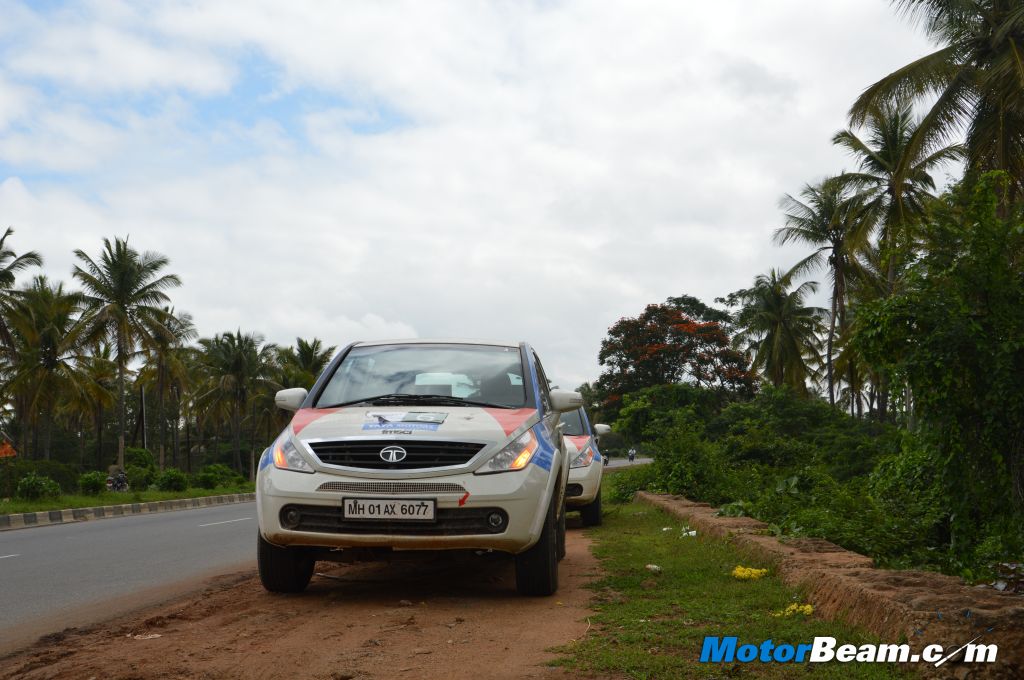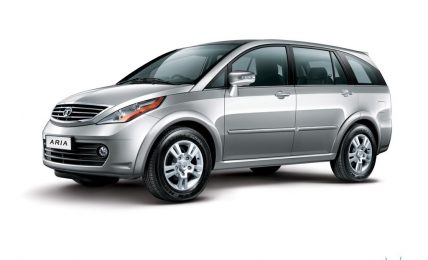
Tata Motors Full Throttle comprises of trails, rallies and experiences. There are four experiences in a year, which consists of a road trip spanning various locations across India. We participated in the Nilgiri Experience which was a 4-day event. Our drive was the Tata Aria 4×2 (Pleasure variant). These Full Throttle events are open to all owners of Tata utility vehicles – Sumo, Safari, Xenon and Aria. It is organized in association with Cougar Motorsport.
[flickr size=”center” float=”medium”]http://www.flickr.com/photos/motorbeam/8127221279/[/flickr]
The Nilgiri Experience started from Bangalore. All participants gathered at NICE toll road at the Mysore exit. The first day we drove to Ooty, where we halted for the night. The 258 kms drive involved a mix of road conditions, including ghats with 36 hairpin bends. The weather was splendid and so was the scenery. Most of the roads were smooth while very few of them showcased the after effects of the monsoon. The drive from Bangalore to Ooty was around 10 hours (including breaks).
[flickr size=”center” float=”medium”]http://www.flickr.com/photos/motorbeam/8127250202/[/flickr]
On the second day, we drove from Ooty to Munnar, a 246 kms journey. This took more time than we expected. Roads are quite narrow and local buses usually end up blocking the roads, urging you to park your vehicle slightly off-road. At the Kerala border, we encountered numerous police check points, where one needs to enter vehicle details and sign. The roads are in good condition with the occasional bumps. The ghat section near Munnar is quite long with blind turns. It is however immensely fun to drive on and the view is breath taking.
[flickr size=”center” float=”medium”]http://www.flickr.com/photos/motorbeam/8127220377/[/flickr]
The third day was rest day, wherein we got a chance to do some local sight seeing. We were put up in a Bungalow on the hill, the road to which was 3-kms of single, narrow, broken tarmac. Only one vehicle can pass through so if anyone comes from the opposite direction, you will have to reverse all the way back!
[flickr size=”center” float=”medium”]http://www.flickr.com/photos/motorbeam/8127247834/[/flickr]
On the fourth day we proceeded to Kochi, which was a 138 kms journey. Roads are very narrow on this route and one needs to be very careful. There are a lot of ghats too and bus drivers drive like crazy, with an aim to reach their destination in the quickest possible time. Around 40 kms away from Kochi, there is quite a bit of traffic and one needs to wait patiently for an overtaking opportunity. Most of the turns are blind and people pop out of no where. It took us 5 hours to do Munnar-Kochi, which is an average speed of less than 30 km/hr!
[flickr size=”center” float=”medium”]http://www.flickr.com/photos/motorbeam/8127247106/[/flickr]
The Tata Aria pleased us throughout the 700-kms we put it through. The Pleasure variant has many features which we found very useful throughout the journey. While the Aria doesn’t score highly on styling, it is a very practical vehicle. The projector headlights work well and kept the roads illuminated across the narrow ghats in the night. The reverse parking sensors help tremendously when we had to reverse more than 200-meters on narrow bridges to let on-going traffic clear.
[flickr size=”center” float=”medium”]http://www.flickr.com/photos/motorbeam/8127220269/[/flickr]
What really pleased us about the Tata Aria was the comfortable seats (thanks to the adjustable lumbar support). The distance to empty meter isn’t too accurate in the Aria and keeps fluctuation showing a vast range difference at times. The vehicle showed a mileage of 11 km/l in-spite of being driven in second gear most of the time (most part of the hill section we were redlining the vehicle). We even like the follow me home headlamp activation through the key.
[flickr size=”center” float=”medium”]http://www.flickr.com/photos/motorbeam/8127221379/[/flickr]
During the Niligiri Experience we encountered highways, crowded city traffic and high altitude climbs. The Tata Aria felt at home in all these conditions. The 2.2-litre DICOR engine produces ample amount of grunt for cruising comfortable on the highways and overtaking vehicles is just a downshift away. On incline hairpin bends, one has to shift into first, due to the turbolag present in the Aria’s 2.2-litre DICOR diesel engine. Keep this engine in the turbo band and it responds beautifully. Smack the throttle through the turns and the rear wheel drive Aria’s tyres start to screech.
[flickr size=”center” float=”medium”]http://www.flickr.com/photos/motorbeam/8127222547/[/flickr]
The Tata Aria feels well settled at high speeds and one feels comfortable pushing the vehicle on the straights. Body roll is present but well contained for a vehicle of this size and weight but the steering is not very precise. Braking performance is good too and so is the ride quality. Overall interior quality is one of the best we have seen in a Tata vehicle but there is still scope for improvement on that front. Many of the interior bits were not in the same condition as a brand new Aria, although to be fair, our vehicle was the one which was used in the Goa rally and thus severely abused. Boot capacity is very good, even with the last row of seats up the boot can swallow good amount of luggage. However, the dead pedal was sorely missed.
[flickr size=”center” float=”medium”]http://www.flickr.com/photos/motorbeam/8127221929/[/flickr]
Throughout the Experience, leading the pack was a Tata Safari (lead car) and trailing the pack was a Tata Xenon (sweep car). They ensured no one got lost. Service and medical back-up were present as well. All the cars moved in a convoy. One need not worry about anything and can concentrate on the thing that matters – driving. Thus we recommend adventure seeking Tata utility vehicle owners to participate atleast once in such events when it comes to a place near. It indeed is a memorable one.



